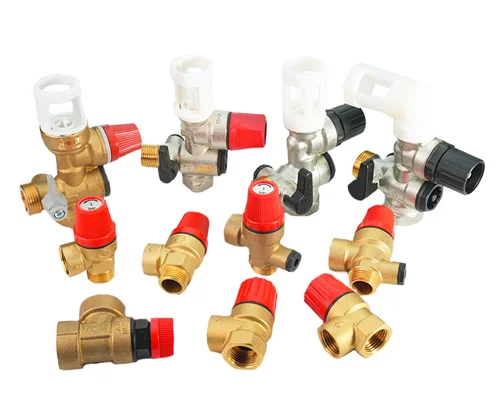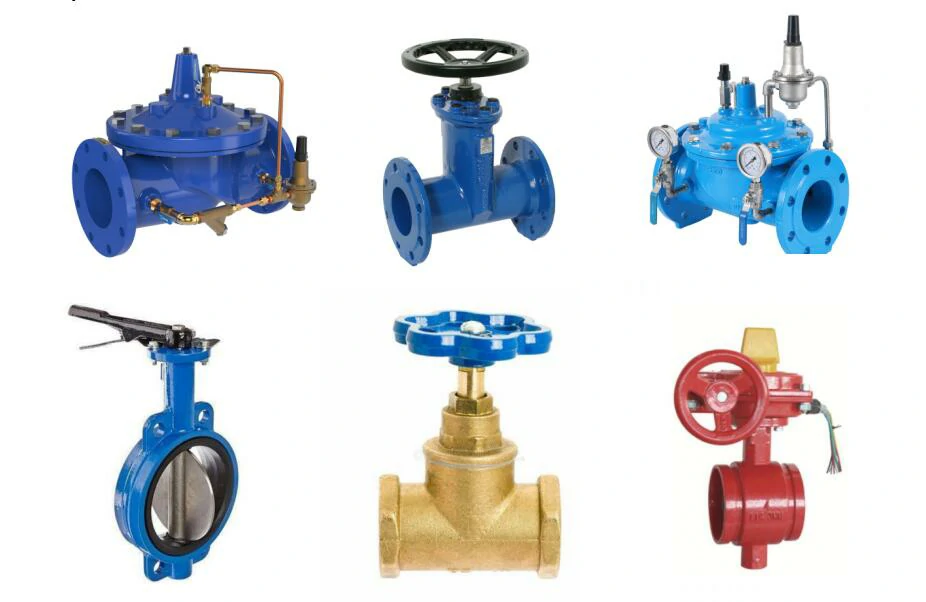When valves are manufactured, design, material, and sealing performance are usually of most importance. There is a second important factor that influences the life of a valve: corrosion resistance, cleanliness, appearance, and surface treatment.
From an industrial cast iron gate valve to a high-luster sanitary ball valve of stainless steel, the surface finish dictates the performance of the valve in its working conditions. Whether for exposure to seawater, corrosive chemicals, pressurized steam, or food grade applications, the right surface finishing process can extend years of service life, improve performance, and certify the valve to industry-specific specifications.
This guide offers an overview of the most common surface treatments applied in the manufacture of valves, including painting, polishing, and coating, and offers background on selecting the appropriate finishing operation for many different applications, without redundancy of information from previous topics of valve material, procurement, or certification.
1. Why Surface Treatment Is an Important Process in Valve Manufacturing?
Let us address why surface treatment is a critical process in the manufacturing of valves before we talk about procedures.
1) Corrosion Resistance Improvement
Durable metals like cast iron or steel can corrode if exposed to air, water, or chemicals. Passivation or epoxy coating of the materials’ surface creates a layer that shields the valve from oxidizing agents and extends its life.
2) Mechanical and Chemical Performance Enhancement
Certain coatings will improve:
- Abrasion resistance (in particulate or high-flow media)
- Chemical stability (in acids or alkalis)
- Temperature resistance (in cryogenic or steam systems)
3) Ease of Meeting Regulations
In food, pharma, or potable water applications, surface finish is regulated for hygiene and safety. A rough or porous surface can leach contaminants or harbor bacteria, and thus plumbing valves supplier use polishing or FDA-approved coatings.
4) Aesthetics and Branding Enhancement
Appearance is essential, especially for building- or consumer-exposed valves in building or consumer-accessible applications. Well-painted or polished valve ensures greater perceived quality and brand image.

2. Painting: Protective and Decorative Coating for Steel and Iron Valves
Painting is the most commonly practiced and cost-effective surface treatment of carbon steel, cast iron, and ductile iron valves.
1) Mechanism of Action
Paint is generally applied following surface cleaning or sandblasting, or primer and topcoat as well. It might be air-dried or baked depending on its composition.
2) Paint Finishes
- Epoxy Paint: Higher in corrosion protection; applied to waterworks and wastewater valves
- Polyurethane Paint: Weather-tight; applied to outside installations
- Powder Coating: Hard, dry, and environmentally friendly; electrostatically sprayed and heat-cured
- Zinc-Rich Primer: Utilized as a basecoat for marine or seacoast corrosion protection
3) Applications
- Municipal water valves
- Fire-protection systems
- Industrial cast-iron valves
- Oil & gas pipeline valves
4) Considerations
- Paint will chip or deteriorate due to exposure to chemicals
- It’s not sanitary-grade and not sanitary for application
- Must be applied evenly in order to create even protection
3. Polishing: Sanitary Finishing, Smooth Stainless Steel Valves
Polishing is a mechanical or chemical treatment for creating a smooth, clean, and reflective surface, typically on stainless steel valves.
1) Mechanical Polishing
Grinding, buffing, and brushing with progressively finer abrasives to reduce surface roughness.
Ra values (roughness average) quantify finish quality
- Ra < 0.8 µm: food-grade valve requirement
- Ra < 0.4 µm: pharmaceutical-grade mirror polish
2) Electropolishing
Electrochemical treatment to strip off a thin metal layer, smooth the surface, and passivate. It yields:
- Enhanced corrosion resistance
- Resistance to bacteria (no crevice for microbial attachment)
- Bright, mirror-like appearance
3) Applications
- Sanitary valves for milk, beer, or beverage processing
- Pharmaceutical and biotech valves
- Cleanroom-grade pneumatic or solenoid valves
4) Factors
- Polishing is more expensive than painting
- Not suitable for soft or coated metals (e.g., cast iron, brass)
- Thinning of the wall if not controlled, with excessive polishing
4. Coating: High-Level Performance under Harsh Conditions
Coatings are distinguishable from the process of simple painting in applying advanced films that chemically or physically bond to the substrate material and provide high-level performance under hostile conditions.
1) Epoxy Coating (Fusion-Bonded Epoxy, FBE)
- Sprayed as a dry powder and heat-dried to produce a hard, corrosion-resistant coating
- Extensively applied to buried potable water mains and valves
- NSF and WRAS certified for drinking water use
2) PTFE and PFA Coatings
- Chemically inert, non-stick fluoropolymer coatings
- Safe to use with very aggressive chemicals (e.g., sulfuric acid, nitric acid)
- High pressure and temperature resistance
Generally applied to:
- Lined ball valves
- Globe valves in acid transfer service
- PTFE diaphragm valves
3) Enamel or Glass-Lined Coating
Applied on valves for slurries, abrasive media, or food-grade oil. The coating is melted and welded to produce a glass-like surface in the valve body.
4) Zinc Coating (Galvanization)
- Hot-dip or electroplating application
- Provides sacrificial corrosion protection
- Popular for galvanized brass or steel agricultural and HVAC valves
5) Ceramic and Thermal Spray Coatings
- Placed for wear-exhausting or erosive use
- Placed as a plasma-sprayed or flame-sprayed ceramic coating
- Recommended for valves in power plants, mines, or slurry transfer
5. Choosing the Appropriate Surface Treatment for Your Valve
Operating conditions of your valve, media, and regulations determine what finish to select.
1) For Chemically Hostile Service
- Use FBE or PTFE coatings with chemical exposure
- Zinc-rich primer + epoxy paint with coastal/marine valves
- Electropolished stainless steel is the option for acidic CIP juices in food processing plants
2) For Sanitary or Hygienic Service
- Electropolishing is the gold standard
- Utilize mirror-finished 316L stainless steel
- Avoid painted or rough-cast surfaces
3) Buried or Outdoor Use
- Select powder-coated ductile iron valves
- Use fusion-bonded epoxy (FBE) for buried use
- UV-resistant polyurethane topcoat if exposed to sunlight
4) High-Abrasion or Erosion
- Hardened alloy valves or ceramic-coated valves can withstand grit or slurry
- Avoid soft, rapidly-wearing coatings in turbulent flow
6. Surface Treatment and Quality Control
Knowledgeable valve manufacturers utilize multi-stage surface preparation and inspection, including:
- Blasting or degreasing before painting
- Film thickness measurements (DFT gauges)
- Adhesion testing of coatings
- Visual examination for pinholes, blisters, or runs
- Painted part, salt spra,y or corrosion testing
In critical applications, always ask:
- Surface finish reports
- Certificates of coating
- Ra value measurements (for bright valves)
7. Conclusion
Although frequently underappreciated, surface finishes are absolutely critical to valve performance. Whether you’re coating an iron valve to shield against rust on a buried water line, polishing a sanitary valve for a clean-in-place system, or coating a valve for use as a nitric acid-handling valve, selecting the proper surface finish introduces safety, durability, and conformance.
Understanding the difference between coating, polishing, and painting provides engineers, specifiers, and buyers with the ability to match the valve not just with a system, but with the environment.


